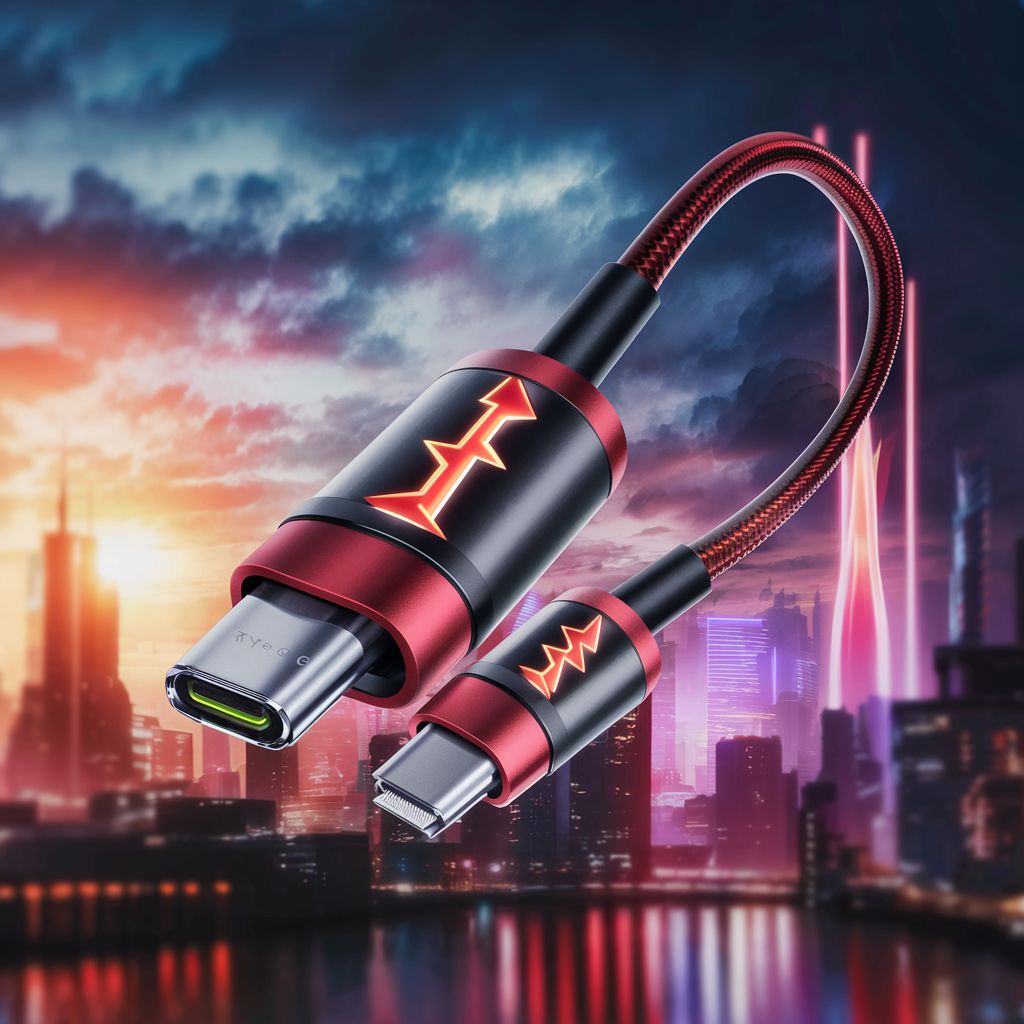USB-C cables are very popular now because they can do a lot of things. But, not every USB-C cable is the same. They look alike but can do different things like carry different amounts of power, work with special features like showing video on a screen, or move data really fast. Let's talk about how these cables are different and how gadgets figure out what a cable can do.
Basics of USB-C Cables
A USB-C cable has a plug with 24 little parts called pins. Inside the cable, there are wires that carry different kinds of signals. Some of these signals are for power, some are for talking to the device, and some are for sending data really fast. It can be tricky because some cables have all these signals and some only have a few.
Smart Cables with Electronic Markers
Some USB-C cables have a tiny chip inside that tells devices what the cable can do. This chip is called an eMark. When the cable is plugged in, it can tell the device how much power it can handle and if it can do special things like work with Thunderbolt, which is a way to move data super fast.Cables without an eMark can't do as much. Devices will be careful and use a basic setting with these cables, like sending power up to 60 watts and moving data at a speed that's not too fast.
What are the latest updates in usb-c technology
Power and Charging
USB-C cables can handle different amounts of power. The old cables could handle up to 20 volts, but now we need more power for things like big laptops. The newest update lets cables handle up to 48 volts. This means they can now provide up to 240 watts of power! But remember, just because a cable can handle more power doesn't mean it's also good at moving data.
Moving Data
Cables can move data at different speeds. Some are slow and only work for charging, while others are super fast and can handle lots of data, like a USB 4 cable that can go up to 80 gigabits per second.
Types of Cables: Passive and Active
There are two main kinds of USB-C cables: passive and active. Passive cables are simple and don't have any special parts inside. Active cables have extra parts, (circuitry) that make them work better, especially if they're really long. These parts help make the data signals stronger and clearer.

Special Features: Alternate Modes
Some USB-C cables can do even more, like send video and audio to a screen in really high quality. Devices use special messages to figure out if a cable can do these things.
Choosing the Right Cable
It's important to pick the right USB-C cable for what you need. They can be different in how much power they carry, how fast they move data, and what special features they have. Devices use special messages to understand what a cable can do.Remember, not all USB-C cables are the same, so make sure you get the one that's right for your gadgets!As of 2024, the information provided here is based on the latest standards and updates. If there have been any new developments or standards introduced after this date, it would be advisable to consult the most recent technical resources or industry updates for the latest information.

